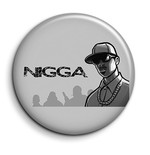In my work, I have examined the role of people’s stereotypes and cognitive representations of groups in justifying inequality. I examine the nature of descriptive (what groups are like) and prescriptive (what groups should be like) stereotypes at the intersections of multiple social identities. Specifically, my work exposes the role of prototypicality biases—assuming people are male (androcentrism), White (Eurocentrism), and straight (heterocentrism)—on the stereotypes people hold of intersectional targets. For example, I investigated the landscape of intersectional gender prescriptive stereotypes by asking people to indicate how desirable it was for a man, a woman, and a person of different races (i.e., White, Asian, Black, Latino, Middle Eastern) and sexual orientations (i.e., straight, gay/lesbian) to exhibit masculine and feminine traits. Not only were the desired traits of “men” and “women” most similar to the desired traits of straight and White men and women, but only straight and White men and women were held to different standards from one another regarding the display of masculine and feminine traits. Relatedly, I have found Eurocentric and heterocentric biases in people’s open-ended accounts of descriptive gender stereotypes, as well as androcentric biases in people’s warmth and competence judgments at the intersection of religion and gender. Additionally, with an undergraduate honors thesis student, I explored androcentric biases in people’s sexual health stereotypes of sexually minoritized people. We have evidence that while the sexual health stereotypes (and subsequent discriminatory consequences) of sexually minoritized people are primarily stereotypes of gay men, people associate lesbian women with sexually transmitted infections under certain circumstances (Rice, Hudson, Noll, 2021).
One consistent finding in my stereotyping research is that while descriptive and prescriptive stereotypes often converge for prototypical groups (e.g., White men are, and should be, masculine), they diverge for non-prototypical groups. For example, while the descriptive stereotypes of Black men are that they are more masculine than White men, prescriptively people believe they should be less masculine. I have continued to investigate this divergence in the realm of ability for sexually minoritized people in masculine (e.g., leadership) and feminine (e.g., communications) domains. I ask whether the presumed competence and abilities of gay men and lesbian women reflect their descriptive stereotypes
Finally, I’ve examined the implicit content of slurs towards marginalized groups that have been reclaimed. For example, does using slurs such as “nigga” or “bitch” in self-referent ways lead such words to become more positive implicitly.
Papers in progress include:
- Using text mining to examine prototypicality at the intersection of sexual orientation and race with gender
- Gender moderates the stereotype content of Christians, Muslims, and Jews
- Chronic awareness of sexual health stereotypes increases risky behaviors in gay men
- Is gay the new black? Implicit associations between race and sexual orientation categories






